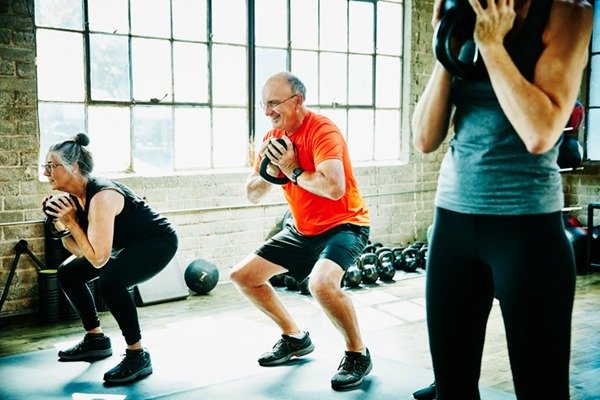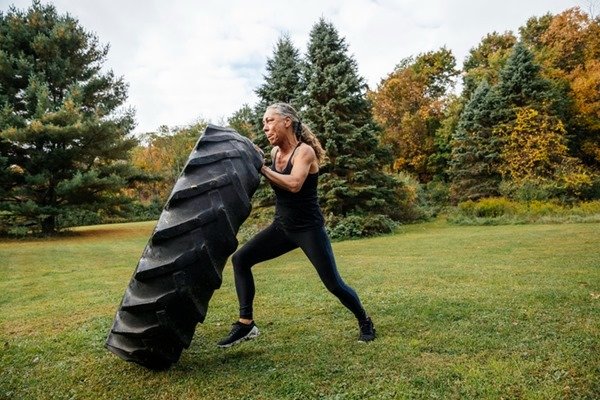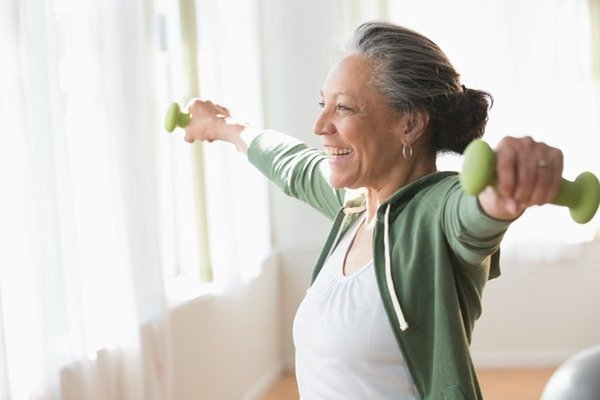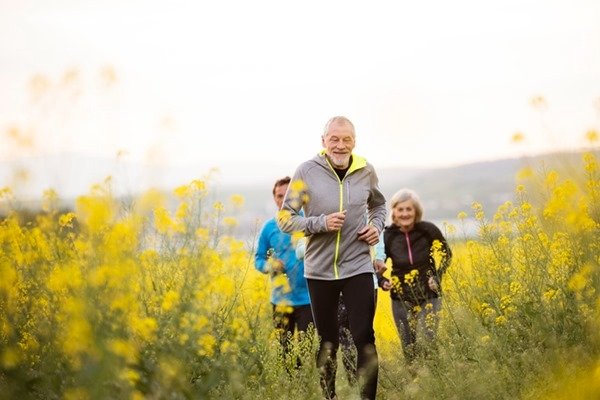It is already known that habit changes, such as eating healthier, can delay the aging of the organism. Yet another place where the effects of aging can be fought is within the gym. Today’s bodybuilding and physical activities can help to have a peaceful aging.
However, it is often not clear to bodybuilders how to project the future into their exercise routines. “It took me many years of practicing sports and reading to find options that could be really effective for the youngest and for those who, like me, seek to age healthy and in full functional capacity”, says Eduardo Netto, technical director of Bodytech Company .
Over time, the body enters a natural aging process and gaining muscle mass can be a little more complicated. However, it’s not impossible. When combined with good eating and physical habits, it is possible to achieve lean massOleg Breslavtsev/ Getty Images
 How-to-gain-muscle-mass (1)
How-to-gain-muscle-mass (1)One of the main tips for gaining muscle mass is to have energy balance, practice weight training and eat correctly.EXTREME-PHOTOGRAPHER/ Getty Images
 How-to-gain-muscle-mass (10)
How-to-gain-muscle-mass (10)Having a good sleep routine is also essential, as well-slept nights favor the metabolic process and promote body recovery after physical exercise.Flashpop/ Getty Images
 How-to-gain-muscle-mass (9)
How-to-gain-muscle-mass (9)To get good results, another tip is to hire a personal trainer, as having the supervision of a qualified professional to help you with what you really need, within the limitations of your body, is the secret to achieving success. Thomas Barwick/Getty Images
 How-to-gain-muscle-mass (8)
How-to-gain-muscle-mass (8)Physical activities promote an increase in cardiorespiratory capacity and general well-being. In addition, they help to avoid cancer and diabetes. For those over 50 who want to gain muscle mass, crossfit is a great option. The Good Brigade/ Getty Images
 How-to-gain-muscle-mass (7)
How-to-gain-muscle-mass (7)After the age of 40, the body decreases the production of hormones, muscle tone and increases the accumulation of fat. Therefore, people with more advanced ages have more difficulties to start performing physical activities, especially if they have a history of sedentary lifestyle in the past.Jose Luis Pelaez Inc/ Getty Images
 How-to-gain-muscle-mass (6)
How-to-gain-muscle-mass (6)Despite this, a healthy routine is capable of generating a virtuous circle, in which hormone levels improve, the body gains lean mass and the individual is more willing toHalfpoint Images/ Getty Images
 How-to-gain-muscle-mass (5)
How-to-gain-muscle-mass (5)Protein consumption also helps in muscle mass gain. However, in order to achieve your goal, it is necessary to adjust the food consumed throughout the day.Jupiterimages/ Getty Images
 How-to-gain-muscle-mass (3)
How-to-gain-muscle-mass (3)Water intake is also extremely important for those who want to tone their body. In addition to all the benefits that liquid has, muscle fibers are composed of 75% to 85% waterGuido Mieth/ Getty Images
0
The expert points out that training to maintain vigor should be done even over the years. For Netto, the changes can be condensed into 10 tips:
1. Integrate your workouts
It is common for gym workouts to work isolated body parts, but we should give preference to activities that simultaneously involve the lower and upper limbs.
“These are exercises that require more than one joint, enhance the participation of muscles and are an excellent stimulus for increasing levels of strength and coordination”, says Netto. Examples of activities are the simulations of walking, squatting and climbing stairs.
2. Focus on mobility
Stretching is key. It is necessary to practice the movements, warming up the body before and after training, especially knees, spine and elbows. “We have to bear in mind that it is much easier to preserve mobility than to work to recover it. With the emergence of foam rollers, for example, in five to 10 minutes of mobility work a day, you can have good athletic conditioning for years”, emphasizes the expert.
Stretching exercises avoid muscle shortening, preserving posture, do not cause pain or discomfort and, on top of that, are of short duration.
3. Have fun training
Variation is a key issue to maintain rhythm and frequency in training. “Over time, you’ll realize that your programs must be versatile enough to preserve fitness and functional capacity,” says Netto. Whenever possible, practice and experiment with other sports and don’t stick to the same workout for more than two months.
4. Exercise the core
The core, the central part of the body, must be a focus of training, not only in the pursuit of a beautiful abdomen, but also to preserve the health of the spine and the proper functioning of the organs. “I recommend practicing core training, which trains weight transfer from upper limbs to lower limbs and vice versa. For this transfer to occur, the work must be focused on resisting the extension and rotation of the trunk, strengthening it”, points out the professional.
5. Start jumping
Jumping rope is one of the favorite activities of those who like to train. Plyometrics, an activity that consists of jumping between objects of different heights, is one of the most famous exercises used to gain muscle power in the lower limbs. The act of collecting and stretching the body to perform the jumps is also beneficial for the core and to gain cardiac capacity.
6. Don’t get tired
For healthy aging, it is also essential to know when to stop and not push the body to fatigue. Regular practice of aerobic training, such as walking, running and swimming, also helps to improve and preserve the proper functioning of the heart and lungs.
In addition, these workouts provide resistance so that the person can push their limits little by little, without having to overdo it and reach extreme levels of tiredness, running the risk of getting injured.
7. Keep agile
Agility training is essential for the autonomy of the individual, it allows you to perform quick tasks and also to maintain the body’s responses with the expected level of reflex. For this, the tip is simple: run, pedal and try to increase the speed of your own body.
8. Practice hand-eye coordination
Coordination is an important element for human beings. Coordinated movements ensure greater performance and lower caloric expenditure, in addition to assisting in the execution of more complex activities. Practicing exercises with limb movements performed in pairs and synchronously can help.
9. Challenge balance while you can
In the elderly, loss of balance can lead to worrying falls and fractures. Therefore, balance training should be carried out by everyone, including those who are not focused on practices that take stability to the limit, such as circus, yoga, climbing and slackline. To exercise in a simple way, it is recommended to include in the stretches the practice of alternating limbs and maintaining body posture.
10. Talk to your doctor
You need to maintain medical follow-up throughout your life to avoid problems before they appear. It is also necessary to assess the need for bone densitometry, especially in sedentary women during menopause, to avoid injuries due to osteoporosis.
Get news from metropolises on your Telegram and stay on top of everything! Just access the channel: https://t.me/metropolesurgente.
